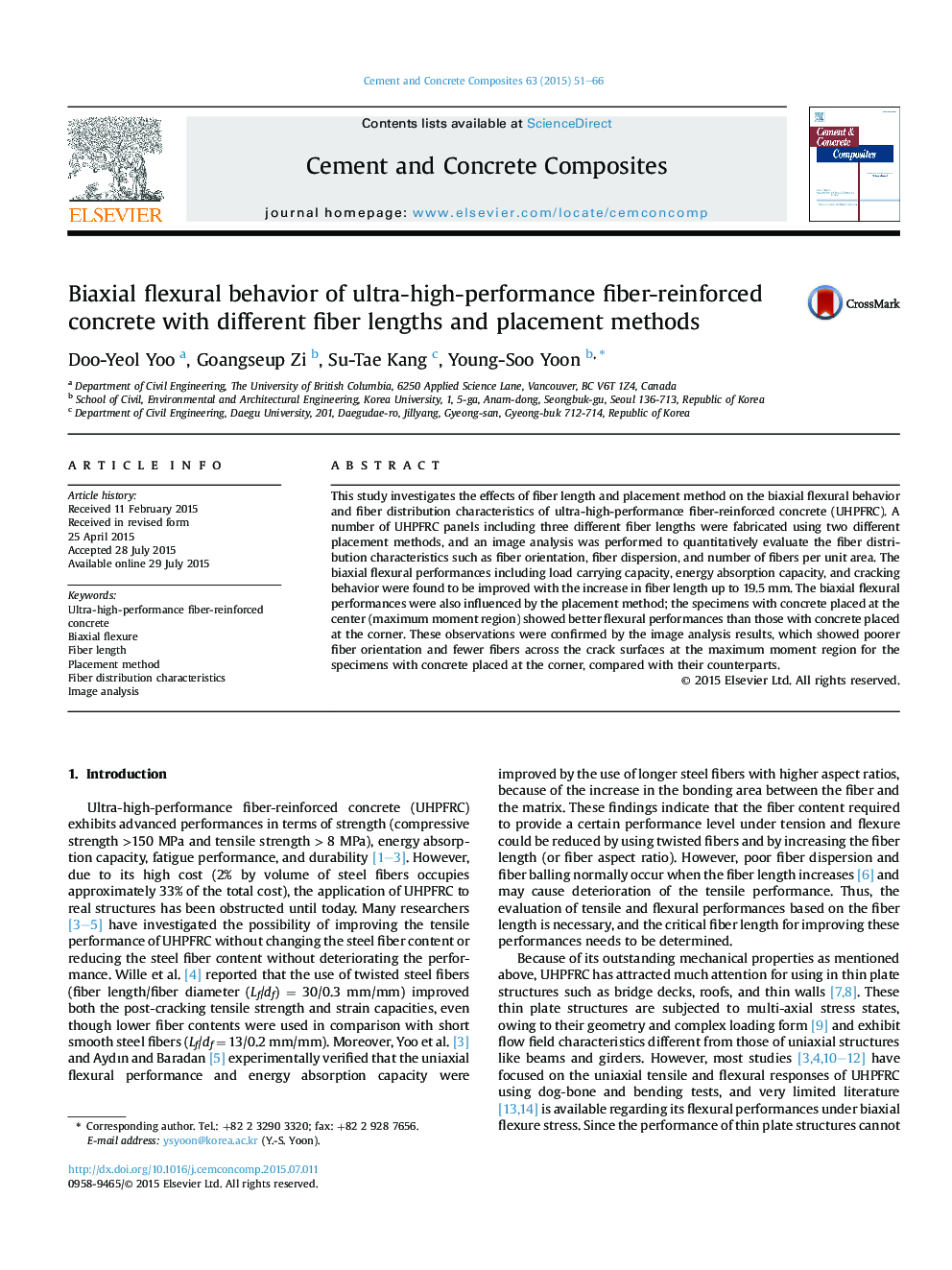| Article ID | Journal | Published Year | Pages | File Type |
|---|---|---|---|---|
| 1454468 | Cement and Concrete Composites | 2015 | 16 Pages |
This study investigates the effects of fiber length and placement method on the biaxial flexural behavior and fiber distribution characteristics of ultra-high-performance fiber-reinforced concrete (UHPFRC). A number of UHPFRC panels including three different fiber lengths were fabricated using two different placement methods, and an image analysis was performed to quantitatively evaluate the fiber distribution characteristics such as fiber orientation, fiber dispersion, and number of fibers per unit area. The biaxial flexural performances including load carrying capacity, energy absorption capacity, and cracking behavior were found to be improved with the increase in fiber length up to 19.5 mm. The biaxial flexural performances were also influenced by the placement method; the specimens with concrete placed at the center (maximum moment region) showed better flexural performances than those with concrete placed at the corner. These observations were confirmed by the image analysis results, which showed poorer fiber orientation and fewer fibers across the crack surfaces at the maximum moment region for the specimens with concrete placed at the corner, compared with their counterparts.
